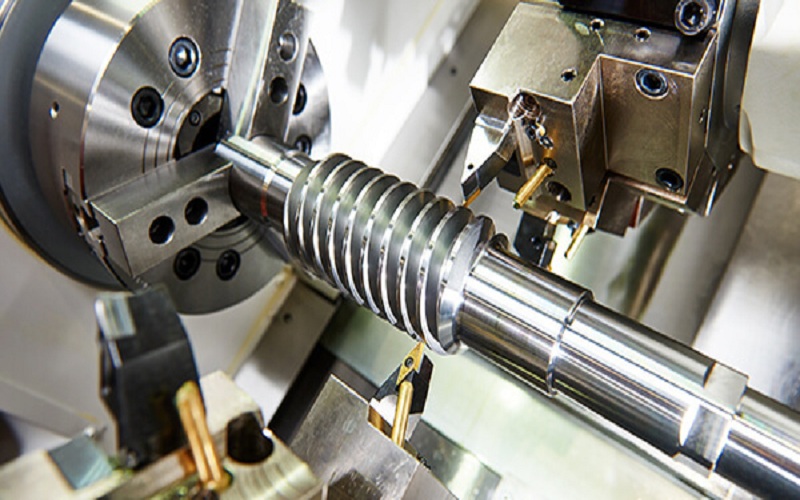How Do Swiss-Type Turning Machines Help Metal Cutting Solutions?
Efficiency and accuracy are critical in the dynamic fields of metalworking and production. Manufacturers are always looking for creative ways to overcome these issues as sectors continue to require parts that are more detailed and complex. One such solution that has become rather popular recently is the Swiss-style turning machine. With many advantages that have transformed metal-cutting procedures, this fantastic post of machinery has become an essential fixture in contemporary manufacturing facilities.
The Ascent of Turning Machines of the Swiss Type
The history of Swiss-style lathes, sometimes referred to as sliding headstock lathes or Swiss-type turning machines, dates back to the 1800s. Originally designed in Switzerland to satisfy the strict accuracy demands of the watchmaking sector, these machines have developed into multipurpose powerhouses that can now manufacture a vast range of intricate parts for many sectors.
The underlying idea of Swiss-type turning machine is their special design, which enables remarkable efficiency and precision in the manufacturing of small, complex pieces. Swiss-type lathes use a sliding headstock that moves the workpiece through a guide bushing, in contrast to traditional lathes where the workpiece is kept in a chuck and stays stationary while the cutting tools move. This creative method gives the material being machined better support, which produces unmatched accuracy and surface finish.
Increasing Accuracy in Metal Cutting
The remarkable precision with which Swiss-type turning machines can do metal-cutting tasks is one of its main benefits. During machining, deflection, and vibration are reduced by the guiding bushing system, which supports the workpiece near the cutting spot. Swiss-type machines are perfect for manufacturing small, high-precision components because of their special feature, which enables tighter tolerances and increased dimensional accuracy.
Because even the smallest departure from specifications can have serious repercussions, industries including aerospace, medical device production, and electronics benefit greatly from the precision capabilities of Swiss-type turning machines. These devices let producers reliably create components with tolerances as close as a few microns, guaranteeing the best possible quality and dependability for their goods.
Optimising Effectiveness and Output
Swiss-type turning machines offer significant increases in productivity and efficiency in addition to their precision capabilities. These devices combine drilling, turning, milling, and other processes into a single arrangement, allowing them to execute several tasks at once. Faster production rates and increased overall efficiency are the results of this multitasking capability’s significant reduction in cycle times and elimination of the requirement for several machine setups.
Swiss-type machines also include several tool stations, which minimizes downtime between processes and allows for quick tool changes. This characteristic allows them to produce complex pieces in a single cycle, significantly cutting production times and labor costs. It also allows them to do back-working operations without moving the workpiece.
Adaptability in the Processing of Materials
Swiss-type turning machines’ adaptability to various materials is another important benefit. Modern Swiss-type machines can process various materials, including stainless steel, titanium, aluminum, and even exotic alloys, despite being created for the timepiece industry to work with brass and other soft metals.
Swiss-type machines are extremely useful in businesses where producing complex pieces from a variety of materials is necessary because of their adaptability. For instance, in the medical device sector, these devices can produce complex plastic parts for disposable medical devices with the same level of efficiency and precision as they can create titanium implants.
Enhancing Surface Render and Component Caliber
Superior surface finish and overall part quality are further benefits of the distinctive design of Swiss-type turning machines. During machining, chatter, and deflection are reduced by the guiding bushing system, which supports the workpiece near the cutting spot. Smoother surface finishes and a decreased demand for additional processes like polishing or deburring are the outcomes.
Furthermore, reducing the possibility of mistakes related to part handling and repositioning is achieved by performing numerous operations in a single configuration. It leads to increased consistency and repeatability in manufacturing runs and an overall improvement in the quality of the completed products.
Minimising Material Wastage
The advantages of Swiss-type turning machines in terms of material conservation are noteworthy, particularly in an era where resource efficiency and sustainability are gaining importance. Compared to traditional machining techniques, these machines’ precision provides for tighter control over material removal and reduced waste.
Furthermore, completing items in a single setup eliminates the need for repeated machining processes, which frequently result in higher material loss. This material utilization efficiency helps reduce costs and is consistent with the increasing focus on environmentally friendly manufacturing techniques.
Changing with the Demands of the Market
Due to their adaptability and agility, Swiss-type turning machines are especially well-suited to shifting market demands. Precision components are becoming more and more necessary as new technologies and industries develop. Without requiring substantial retooling or new equipment investment, businesses may quickly adapt to these shifting needs thanks to Swiss-type machines’ excellent precision and efficiency in producing a wide range of products.
In businesses where design iterations are necessary or where product cycles are quick, this adaptability is extremely beneficial. Swiss-type turning machine manufacturers ensure their competitiveness in ever-changing market conditions by having the ability to effortlessly convert between various part configurations, materials, and production volumes.
Improving Uniformity and Quality Control
Swiss-type turning machines provide several benefits when it comes to quality control, which is an essential component of any production process. These machines’ great precision and repeatability lower the chance of errors and lessen the requirement for stringent quality control procedures by ensuring consistent part quality throughout production runs.
Modern Swiss-type machines also often have sophisticated monitoring and control systems installed, which enable real-time process optimization and quality control. Long-term production runs can be assured of consistent results thanks to these systems’ ability to identify and compensate for issues like tool wear, thermal expansion, and other potential threats to part quality.
Taking Care of Skill Gaps and Labour Shortages
Swiss-type turning machines present a strong answer to the persistent problems of labour shortages and skill gaps that the manufacturing sector faces. These machines’ high degree of automation and simplicity of use lessen the need for highly qualified workers, which enables manufacturers to retain productivity even in the face of labor shortages.
Furthermore, a greater range of operators can operate modern Swiss-type machines thanks to their user-friendly programming interfaces and sophisticated control systems, which also shorten the training period and learning curve needed to become proficient. By making it simpler to draw in and keep new talent, accessibility helps with the current labor shortages and supports the long-term viability of manufacturing operations.
Conclusion
In the realm of metal cutting solutions, Swiss-style turning machines have become a revolutionary technological advancement. Numerous advantages stemming from its distinctive design and capabilities include superior component quality, higher efficiency, adaptability in material processing, and unmatched precision. Swiss-type machinery is set to become more and more crucial to contemporary manufacturing as sectors continue to require more intricate and accurate components. Manufacturers may become more competitive, produce better products, and adjust to the constantly shifting needs of the global market by utilizing this technology.

